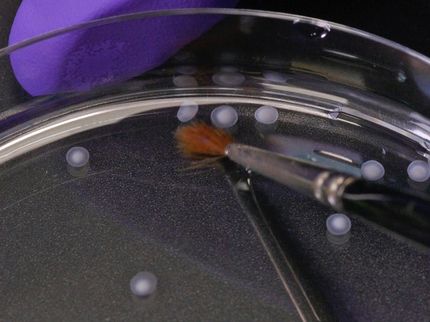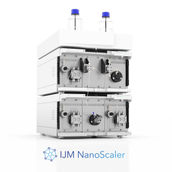Developing drugs to treat Parkinson’s disease
The LCSB and Ksilink are exploring new territory together
Advertisement
Representatives of the University of Luxembourg and the technology company Ksilink which is developing novel patient-based forms of therapy, signed a collaboration agreement last Friday. The agreement constitutes the framework for collaboration between Ksilink and the Luxembourg Centre for Systems Biomedicine (LCSB) of the University of Luxembourg for developing drugs to treat Parkinson’s disease.
Around seven million people in the world suffer from Parkinson’s disease, and the number is rising. Although medical professionals are already quite capable of treating the symptoms of the disease, in which brain cells die off, there is still no therapy that eliminates the causes of the disease. The LCSB and the Strasbourg-based, private-public technology company Ksilink are now working together to tackle this problem. Together, they want to develop novel, patient-based cell culture models in which they can automatically and with artificial intelligence (AI) test drug candidates from a large substance library. With a runtime of five years and an investment volume of more than eight million euros, the project is an important public-private partnership.
Part of its budget is funded through the BRIDGES programme of the National Research Fund (FNR). “This underscores the potential that Ksilink sees in our clinical research expertise,” says Prof Dr Rejko Krüger, head of the Clinical & Experimental Neuroscience Group at the LCSB. Ksilink’s business developer, Dr Mona Boye, agrees: “Combining the LCSB’s patient-based cell cultures and clinical competence with our expertise in phenotypic drug discovery and industrial drug development presents a chance to make a real breakthrough in the development of therapies for Parkinson’s disease.”
Parkinson’s disease has many causes. Of the potential triggers, one that stands out is genetic mutations. Researchers from the LCSB and Ksilink are therefore focusing on such mutations, as Rejko Krüger explains: “Our patient cohort in the National Centre for Parkinson’s Disease – NCER-PD – gives us access at the LCSB to tissue samples from Parkinson’s patients and from healthy volunteers in the study. Thanks to novel laboratory methods for high-throughput analysis of patient cell cultures using robotics, which we have developed over recent years with financial backing from the FNR, we can now do studies on these samples that could give us very specific pointers to potential drugs that will treat Parkinson’s disease.”
To do this, the researchers first convert the cells from tissue samples into so-called pluripotent stem cells in the laboratory. From these, they can then obtain precisely the type of cell that is most affected by Parkinson’s disease, namely dopaminergic nerve cells, and therefore of greatest importance in this context. Dopaminergic nerve cells exhibit very specific mutations in their DNA. “In recent years, in cooperation with the Developmental & Cellular Biology Group of Prof. Jens Schwamborn, we have built up the special expertise required for developing such specific Parkinson cell models at the LCSB,” Krüger says.
The patients’ cell cultures are then examined in large numbers under the high-resolution microscopes of Ksilink. Serving as controls are cell cultures from healthy relatives or from rescue models – cell cultures in which the mutation has been repaired using the latest in gene editing techniques, for example CRISPR-Cas, the so-called “molecular scissors”. “We have imaging techniques to analyse cell cultures automatically, including the use of self-learning algorithms, or in other words artificial intelligence,” says Mona Boye. “The use of AI enables us to detect even very subtle and heterogeneous structural changes in the cells when comparing them with the control cells. Only fully automated high-throughput technology like that at Ksilink allows us to test big substance libraries and achieve meaningful results.”
Under Ksilink’s high-resolution microscopes, molecules from the substance library are introduced into cell cultures originating from patients and with typical Parkinson’s changes, and into genetically engineered controls that do not develop Parkinson's disease. “In these cell cultures, we will then use our image analysis techniques to observe which substances are able to push the diseased cells towards a healthy state,” Boye says. “This way, we can identify potential drug candidates which we will examine more closely and then develop further into preclinically validated candidates.”
Another step will be to clarify the mechanism of action. “Our approach is described as undirected,” Boye explains. “We don’t focus on a specific target molecule or specific signal transduction path; rather we test the substances in the complete, complex cell system. There is a strong chance of identifying a novel active substance that represents a completely new class of active substances. The exact target molecule and mechanism of action will then be determined as a part of downstream drug development.” If these investigations are successful, i.e. if a substance exhibits the desired effect in the cell system and a tolerable mechanism of action can be demonstrated, then the potential active substance will go into subsequent preclinical and clinical development. “The likelihood that this innovative approach for identifying new active substances will result in a drug is much higher than with classical approaches,” Boye explains. “In our collaboration with the LCSB, we use patient-based cell models right from the start. Potential active substances are identified directly with the help of these patient cells and expedited into preclinically validated candidates under consideration of industrial standards. Technical or regulatory errors, which could otherwise occur in the lab in the early phase without close industrial connections, are thus avoided.”
For Rejko Krüger, the collaboration between Ksilink and the LCSB is a high point in the four years he has been working in Luxembourg. “Thanks to the PEARL Grant from the FNR and the Luxembourg Parkinson’s study (NCER-PD) – which we were able to establish with strong support from Luxembourg – and given the ideal research conditions in the Grand Duchy, we have been able to acquire a scientific excellence that has made our research groups at the LCSB and our many clinical-scientific partners in the country highly attractive for cooperation with pharmaceutical companies. If the collaboration with Ksilink now truly culminates in a promising drug candidate that does pass the subsequent clinical trials, this would definitely represent a highlight in our joint Parkinson’s research in Luxembourg.”































































